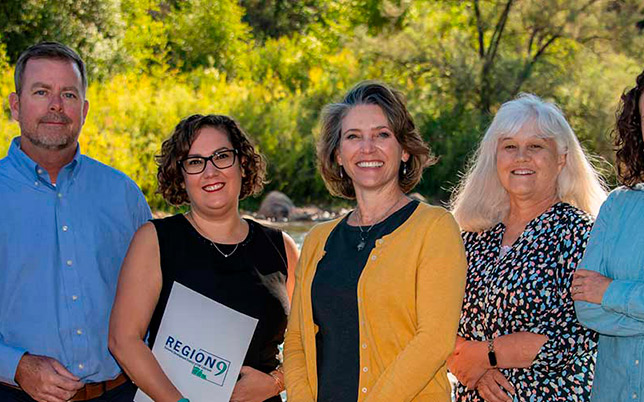Region 9 Economic Development District of Southwest Colorado

By Laura Lewis Marchino, Executive Director
Region 9 Economic Development District of SW Colorado
As our communities recover from the COVID pandemic, it is a good reminder to look at our amazing regional assets and diversity so critical to recovery.
Southwest Colorado has everything that you as a resident or business would want within an hour’s drive of any community. However, many of you have overheard the, “We don’t have an airport.” or “The college is in Durango”. Though technically true, those statements are also creating a “negative narrative” and reinforces the focus on community boundaries. Those simple statements are something that can impact business relocation. For example, all the Front Range communities use the Denver International Airport, but you do not hear residents of Ft. Collins saying, “Oh we don’t have an airport” because they consider DIA their airport. When you stop and think about it, DIA serves a huge geographic area from Ft. Collins (70 miles away) to Fairplay and even Silverthorne.
Rural areas traditionally typically think within their community boundaries rather than what is available regionally. We all want medical care, education, culture and transportation. In rural areas, those items may not be sustainable on a community level but can be on a regional one. Regionalism makes the pie bigger, not just in terms of services, but in creating economies of scale and reducing duplication. Businesses that think regionally are more likely to grow as they understand they need a larger population and customer base. Simply by reframing our unintentional negative narrative to, “Within an hour’s drive we have an airport, a 4-year college, three hospitals, a community college, several National Parks and unlimited recreation opportunities,” we become the region that has it all.
Working through a regional lens also solves the following business concerns:
• Shortage of business-to-business services.
• Limited access to information/knowledge centers — one community may lack the services that another has.
• Dominance by single business or industry — a large employer in one community is one of many when looking regional.
• Local labor skills and availability — you yourself may live in one community but work in another.
Rural communities are a destination to visit and more and more, to move to. Southwest Colorado has the assets to compete.

